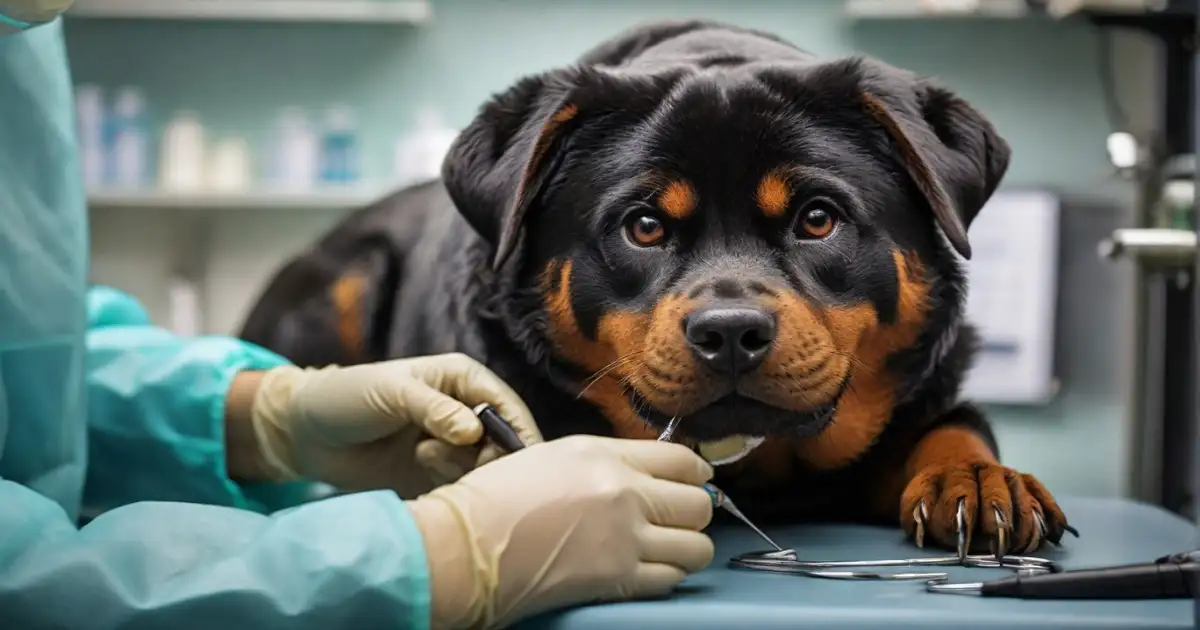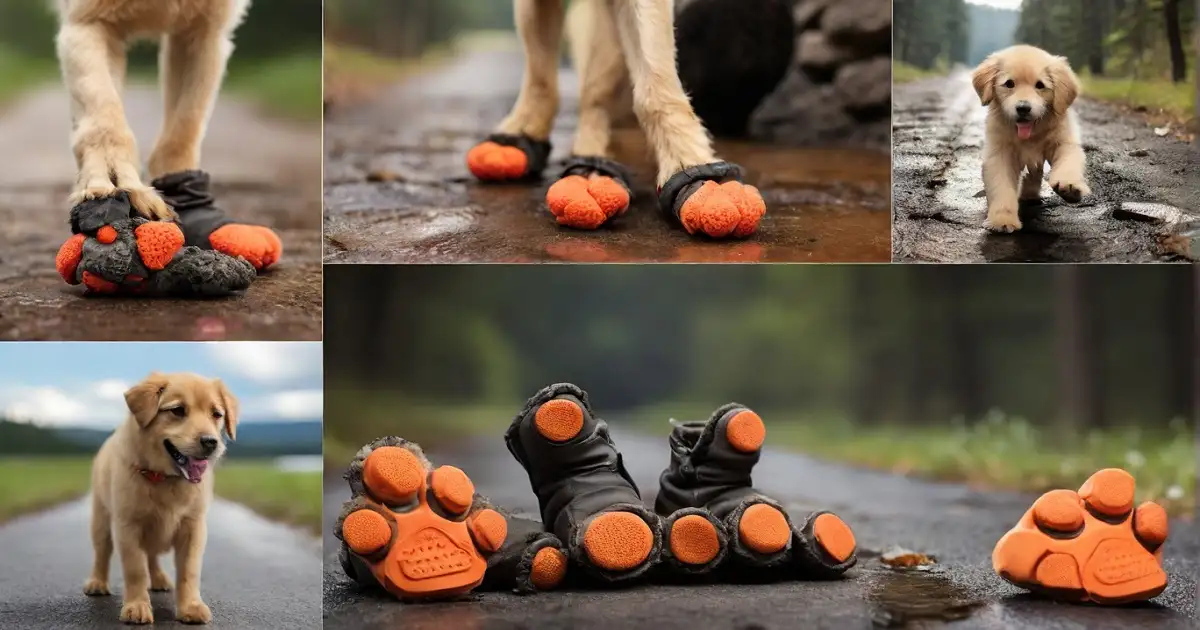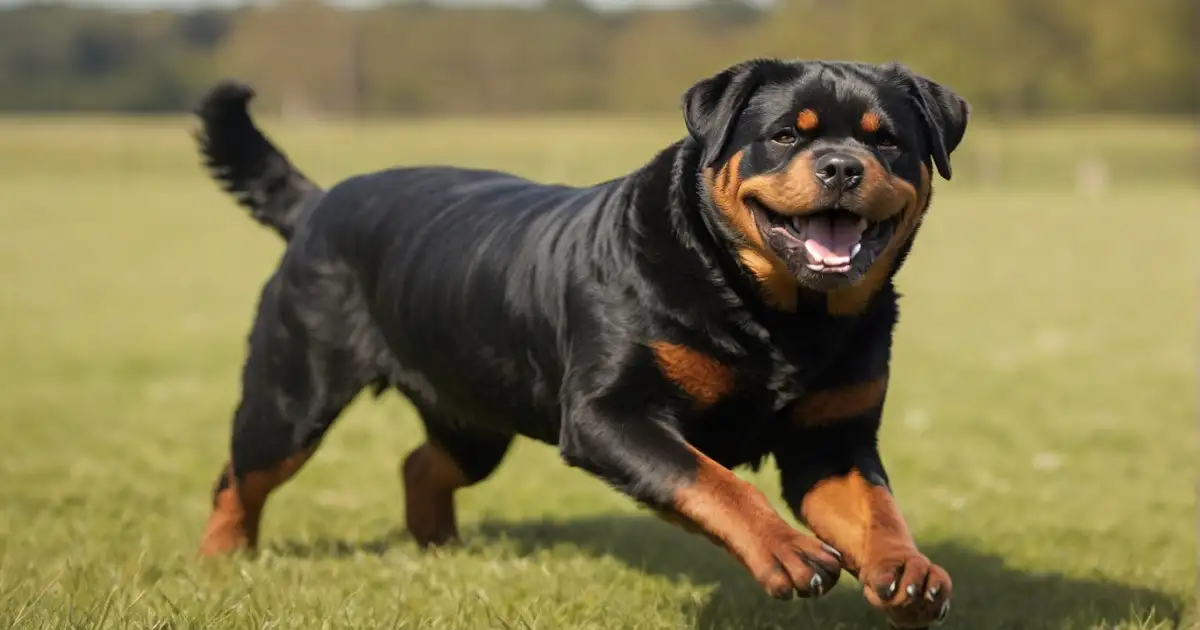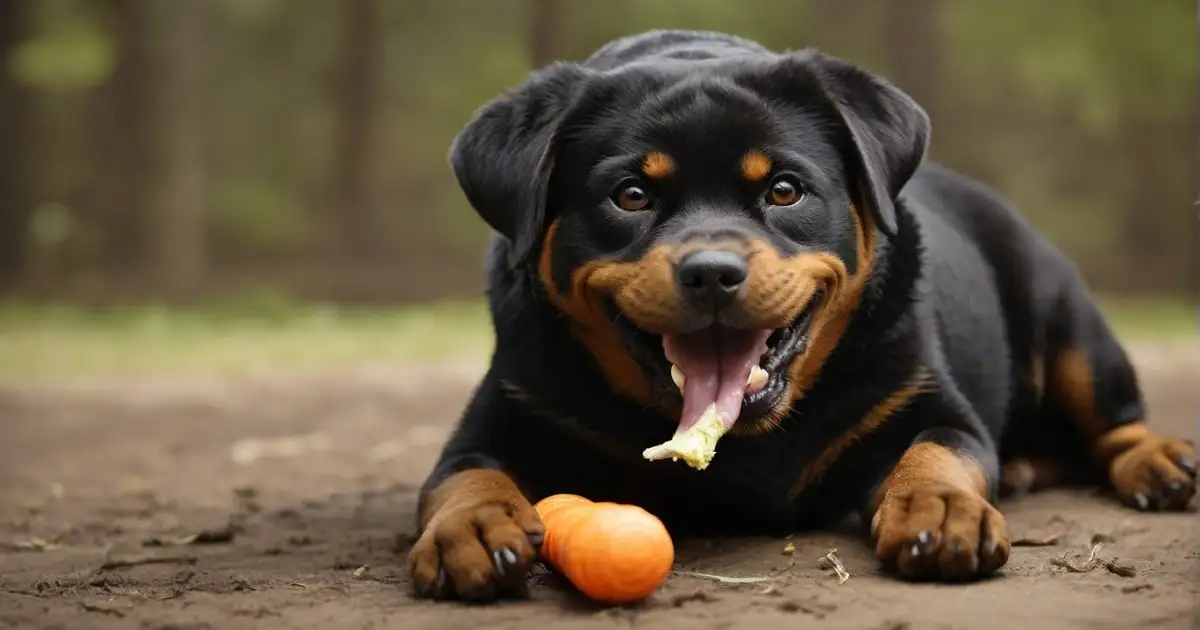Imagine this: you glance at your beloved Rottweiler, Bruno, and notice his big, soulful eyes fixated not on you but on his paws.
He’s not just giving them a quick groom, though. He’s licking relentlessly, almost like they’ve offended him.
You know dogs lick their paws sometimes, but excessive paw licking can be a real cause for concern. It might raise questions in your mind like, “Why is my Rottweiler doing this?” and “How can I make him stop?” Don’t worry, fellow Rottweiler enthusiast; you’re not alone.
Paw-licking in our loyal giants is more common than you think, and figuring out the reason behind it can be the first step toward happier, healthier paws for Bruno.
So, grab your favorite mug of coffee, buckle up, and let’s delve into the mysterious world of why these majestic dogs can’t seem to put their tongues away from their paws.
The Root of the Lick: Demystifying Rottie Paw Problems
We’ve established that Bruno’s incessant paw-licking isn’t just a quirky habit. It could be a sign of something deeper, like a medical issue or a behavioral quirk. So, let’s roll up our sleeves and investigate the potential culprits lurking behind this lick-a-thon.
Medical Matters:
- Skin Allergies: Itchy paws are a common side effect of allergies. Rottweilers can be particularly sensitive to environmental allergens like pollen and dust or food allergies to ingredients like chicken or wheat. Signs to watch for include redness, swelling, and raw patches on the paws.
- Dry Paws: Especially during harsh winters, Bruno’s paws might be feeling rough and cracked due to dryness. It can be uncomfortable and lead to excessive licking.
- Infections: Bacterial or fungal infections, often caused by contact with irritants or wounds, can make paws itchy and painful, fueling that persistent lick.
- Parasites: Fleas, mites, and even ticks can make your Rottweiler’s paws their playground, causing relentless itching and discomfort.
- Joint Pain: As our furry friends age, arthritis can become a concern. Licking affected paws can be a way to soothe the pain.
Behavioral Triggers:
- Boredom and Lack of Stimulation: Rottweilers are intelligent and energetic dogs. If Bruno’s days lack mental and physical challenges, he might turn to paw licking as a way to entertain himself.
- Anxiety and Stress: New environments, loud noises, or even separation anxiety can trigger stress in some Rottweilers, leading to compulsive behaviors like paw licking.
- Obsessive-Compulsive Disorder (OCD): While less common, canine OCD can manifest in repetitive behaviors like excessive licking. It requires professional assessment and treatment.
Environmental Factors:
- Rough Terrain or Harsh Chemicals: Walking on hot asphalt, sharp rocks, or surfaces treated with harsh chemicals can irritate Bruno’s paws, prompting him to lick for relief.
- Exposure to Toxins or Allergens: Household chemicals, cleaning products, or even certain plants can trigger allergic reactions in some dogs, leading to paw licking.
Remember, this is not an exhaustive list, and sometimes, the cause of paw licking might be a combination of factors. The key is to observe Bruno’s behavior, look for specific symptoms, and consult your veterinarian for a proper diagnosis.
Table: Paw-Licking Symptoms and Potential Causes:
| Symptom | Possible Cause |
| Redness, swelling, raw patches | Skin allergies, infections |
| Dry, cracked paws | Dryness |
| Licking accompanied by limping or whimpering | Joint pain |
| Excessive licking in the absence of obvious physical signs | Boredom, anxiety, OCD |
| Licking after walks on rough or treated surfaces | Environmental irritation |
By understanding the root of the lick, you can take the right steps toward alleviating Bruno’s discomfort and helping him find peace in his paws. Stay tuned for the next section, where we’ll explore effective strategies to tackle the paw-licking problem at its core!
Taking Action: Stopping the Lick and Saving the Paws
Bruno’s persistent paw-licking isn’t just a bad habit; it’s a call for help. But fret not, fellow Rottweiler guardian! Armed with the knowledge of the potential causes, we can now embark on a mission to stop the lick and return peace to those precious paws.
Veterinary Consultation:
First things first, a trip to your trusted veterinarian is always the wisest course of action. They can perform a thorough examination, rule out any underlying medical conditions, and recommend the most appropriate treatment plan. It might involve:
- Antibiotics or antifungal medications: For infections.
- Allergy testing and treatment: To identify and manage sensitivities.
- Pain medication: For joint pain or arthritis.
- Behavioral therapy: For anxiety or OCD.
Home Remedies and Management Techniques
Remember, working alongside your vet, you can implement some helpful home-based strategies to address the licking:
- Addressing Allergies:
- Diet change: If food allergies are suspected, discuss transitioning Bruno to a hypoallergenic diet with your vet.
- Environmental control: Minimize exposure to known allergens by regularly vacuuming, using air purifiers, and limiting access to outdoor triggers.
- Paw care: Gently clean Bruno’s paws after walks with a mild, dog-safe cleanser and apply a paw balm to soothe irritation.
- Combating Boredom and Lack of Stimulation:
- Increased exercise: Ensure Bruno gets plenty of walks, playtime, and mental stimulation through interactive toys, training sessions, and scent work activities.
- Food puzzles and chew toys: These provide both physical and mental engagement, keeping Bruno occupied and less likely to resort to licking.
- Interactive walks: Explore new trails, meet other dogs, and introduce sniffing opportunities to keep Bruno’s mind and senses active.
- Managing Anxiety and Stress:
- Identify triggers: Loud noises, separation anxiety, or new environments might be culprits. Work with your vet to implement desensitization training or anxiety-reducing techniques.
- Provide safe spaces: Create a cozy crate or quiet corner where Bruno can retreat and feel secure.
- Consider calming aids: Consult your vet about natural supplements or pheromone diffusers that can promote relaxation.
- Environmental Adjustments:
- Protect those paws: Invest in dog booties for walks on rough terrain or during harsh weather conditions.
- Clean and pet-proof your home: Eliminate potential toxins and allergens by keeping cleaning products safely stored and removing harmful plants.
- Provide alternative licking options: Offer safe chew toys or lick mats with frozen treats to redirect Bruno’s attention away from his paws.
Remember: Consistency is key! These methods, along with your vet’s guidance, can effectively address the underlying cause of Bruno’s paw licking and bring him relief.
Table: Home Remedies for Common Paw-Licking Causes:
| Cause | Home Remedies |
| Skin allergies | Hypoallergenic diet, environmental control, gentle paw care |
| Dry paws | Paw balm, moisturizing baths, increased water intake |
| Boredom and lack of stimulation | More exercise, mental stimulation toys, interactive walks |
| Anxiety and stress | Desensitization training, safe spaces, calming aids |
| Environmental irritation | Dog booties, paw cleaners, pet-proofing your home |
By taking a proactive approach, understanding Bruno’s unique needs, and working in collaboration with your vet, you can turn his incessant licking into a distant memory and watch him strut about with happy, healthy paws once again. Stay tuned for the next section, where we’ll explore strategies for preventing future flare-ups and keeping those paws lick-free!
Prevention is Paws-itively Perfect: Keeping Future Licks at Bay
Remember those days when Bruno’s paws were lick-free and joyful? Let’s make them the new normal! By incorporating smart preventative measures into your daily routine, you can ensure those precious paws stay happy and healthy.
Proactive Paw Patrol:
- Regular Grooming: Schedule weekly paw inspections and gentle cleanings with a dog-safe wipe or mild cleanser. It allows you to spot early signs of irritation or potential problems before they escalate.
- Moisturizing Matters: Regularly applying a paw balm, especially during dry seasons, keeps paws hydrated and supple, reducing the urge to lick due to dryness.
- Trim those Toenails: Overgrown nails can cause discomfort and lead to accidental injuries, triggering licking. Keep them trimmed short and smooth with regular nail clipping sessions.
- Healthy Diet and Exercise: Ensuring Bruno receives a balanced, high-quality diet rich in essential nutrients supports overall health and skin condition, often reducing the itchiness that fuels licking. Regular exercise also benefits mental and physical well-being, minimizing boredom and stress-related behaviors.
Stress-Busting Strategies:
- Enrich Bruno’s World: Keep him mentally stimulated with interactive toys, scent work activities, and training sessions. Puzzle feeders and lick mats are great options to satisfy his instincts and deter licking.
- Create a Calm Environment: Provide Bruno with a safe space, like a cozy crate or quiet corner, where he can retreat and feel secure. Use calming diffusers or incorporate relaxation techniques like massage or gentle play sessions.
- Positive Reinforcement: Reward Bruno for appropriate behaviors like playing with toys or engaging in calm activities. It strengthens desired behaviors and reduces the need for self-soothing actions like licking.
Environmental Awareness:
- Paw Protection is Key: Use dog booties during walks on rough terrain, hot asphalt, or during harsh weather conditions to protect paws from irritation and potential injuries.
- Clean and Toxin-Free Home: Regularly clean your home with pet-safe products and keep all chemicals and potential toxins out of Bruno’s reach. Minimize access to harmful plants that might trigger allergic reactions.
- Regular Vet Check-ups: Don’t underestimate the importance of routine vet visits. Early detection and management of underlying medical conditions can prevent paw licking in the first place.
Table: Preventative Measures for Common Paw-Licking Causes:
| Cause | Preventative Measures |
| Skin allergies | Regular vet check-ups, hypoallergenic diet if needed, environmental control |
| Dry paws | Moisturizing paw balm, regular paw cleaning, increased water intake |
| Boredom and lack of stimulation | Enriched environment, mental stimulation toys, regular exercise |
| Anxiety and stress | Stress-busting activities, safe spaces, positive reinforcement |
| Environmental irritation | Dog booties, regular paw cleaning, pet-proofing your home |
Remember, prevention is truly the best medicine. By actively incorporating these tips into your routine, you can create a healthy, paw-positive environment for Bruno, minimizing the chances of future licking episodes and letting him enjoy life to the fullest with happy, healthy paws.
And that concludes our comprehensive journey into the world of Rottie paw-licking! Hopefully, you’re now equipped with the knowledge and tools to navigate this issue with confidence. Remember, always consult your veterinarian for personalized advice and treatment plans, and keep showering Bruno with love and attention. Now go forth, fellow Rottweiler enthusiast, and let your loyal companion strut and play with lick-free paws for years to come!
Conclusion
We’ve reached the end of our paw-print-filled journey, fellow Rottweiler aficionados! We’ve delved into the mystery of Bruno’s incessant paw licking, uncovering the potential medical and behavioral causes lurking behind it. We’ve explored a treasure chest of home remedies and management techniques, from soothing paw balms to stress-busting activities. And finally, we’ve equipped ourselves with preemptive strategies to keep those precious paws lick-free and frolicking with joy.
But this isn’t just about stopping the lick; it’s about understanding Bruno’s unique needs and ensuring his overall well-being. Remember, excessive paw licking is a sign that something isn’t quite right, and by taking the time to observe, investigate, and implement solutions, you’re showcasing your love and devotion to your furry friend.
Here’s a quick positive reminder:
- Listen to Bruno: Observe his behavior, watch for specific symptoms, and be attuned to his needs. Early detection is key to effective solutions.
- The vet is your best friend: Regular check-ups, professional diagnoses, and personalized treatment plans are invaluable in addressing underlying medical concerns.
- Home is where the paw balm is: Implement gentle paw care routines, moisturize those pads, and provide safe chew toys to redirect licking urges.
- Boredom is the enemy: Give Bruno mental and physical stimulation through interactive toys, training sessions, and engaging walks. A tired pup is a happy pup and less likely to resort to excessive licking.
- Calmness counts: Create a stress-free environment with safe spaces, calming aids, and positive reinforcement for desired behaviors. A relaxed Rottie is a happy Rottie!
- Prevention is priceless: Routine paw inspections, environmental awareness, and regular vet visits go a long way in keeping future licking episodes at bay.
By embracing these principles, you can become Bruno’s ultimate paw champion, ensuring his days are filled with tail wags, happy barks, and, of course, healthy, lick-free paws. Remember, a happy Rottie with happy paws is a testament to your unwavering love and dedication. So, go forth, spread the positivity, and let Bruno lead the way with confident strides and joyous leaps!
Bonus Tips:
- Connect with other Rottie owners: Joining online communities or dog parks allows you to share experiences, swap tips, and learn from fellow enthusiasts.
- Celebrate small victories: Every reduction in licking, every paw lick replaced with a playful bite on a chew toy, is a step towards success. Acknowledge and celebrate these victories with Bruno to keep him motivated.
- Shower him with love: Never underestimate the power of unconditional love and affection. Give Bruno belly rubs, ear scratches, and all the cuddles he deserves, reminding him that he’s your beloved furry companion, no matter what.
Together, with knowledge, dedication, and a whole lot of love, we can ensure that Bruno’s future is filled with happy trails, not persistent paw licks. Now go forth, fellow Rottweiler guardians, and let your majestic companions strut and play with happy, healthy paws always!
This final section concludes your blog post in a heartwarming and positive way. Remember to modify it to fit your specific writing style and add any personal touches you desire. Good luck with your blog post!







